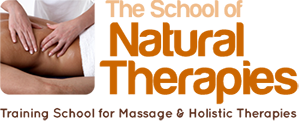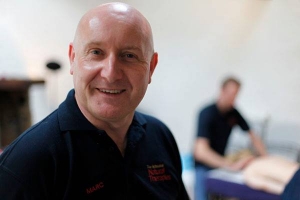Project Description
Emergency First Aid and Red Flag Symptoms for Therapists
Qualification gained: Emergency First Aid at Work Certificate (EFAW) and discovery session for ‘Red Flag’ symptoms, which will enable therapists to feel more confident in recognising any significant signs and symptoms.
This 6.5-hour course fulfils all these requirements and learners will leave with the confidence to deal with emergency life threatening situations in a competent way.
EFAW First Aid Training (accredited and HSE approved syllabus)
Would you know what to do if someone in your treatment room became unwell, fell, and sustained a head injury? What if someone had a diabetic coma in your treatment room?
We recommend that all therapists consider best practice and equip themselves with the skills required to deal with a sudden emergency, such as those mentioned above.
This one day accredited First Aid Course is delivered with the Massage therapist, Reflexologist and other complementary professionals in mind.
As a first step towards saving a life – it may prove useful for any member of the general public also.
In times of change where standards in first aid are largely unregulated, the need for a professional first aid qualification to comply with statutory requirements is paramount.
This course is comprehensive, follows government recommended industry standards, as laid down by the HSE (Health & Safety Executive) syllabus and certificates are issued by a First Aid Industry Professional Association who adhere to these requirements.
Red Flag Symptoms – Learners will also benefit from a further session of important RED FLAG signs and symptoms, which therapists may encounter with their clients, providing clear and useful information, should the therapist need to refer their client for medical investigation with their GP, or other healthcare provider.
This important course element aims to instil more confidence for the massage and complementary therapist, in order to differentiate between client safety, or being unnecessarily over concerned.
Course Trainer
The course is delivered by former NHS Paramedic and School Principal, Marc Innes.
Marc was a trainer, Paramedic and latterly a Superintendent for the NHS, spanning a 23-year career.
He delivers first aid training using his own personal stories and experiences, of looking after the population of London – always with a realistic and relevant portrayal of the facts about delivering emergency and primary care in a real-life situation.
Because of the importance of this course content, this robust course attracts 10 CPD points.
Course Structure
During this one day course, learners will:
Understand the role and responsibilities of a first aider
1.1 Identify the role and responsibilities of a first aider
1.2 Describe how to minimise the risk of infection to self and others
1.3 Identify the need for establishing consent to provide first aid
1.4 Complete an accident form
1.5 Identify the first aid equipment that should be available in a workplace
1.6 Describe the safe use of first aid equipment
2. Be able to assess an incident
2.1 Conduct a scene survey
2.2 Conduct a primary survey of a casualty
2.3 Give examples of when to call for help
3. Be able to manage an unresponsive casualty who is breathing normally
3.1 Assess a casualty’s level of consciousness
3.2 Open a casualty’s airway and check breathing
3.3 Explain why it is important to place an unconscious casualty into the recovery position
3.4 Place an unresponsive casualty in the recovery position
3.5 Manage a casualty who is in seizure
Be able to manage an unresponsive casualty who is not breathing normally
4.1 Recognise the need to commence Cardio Pulmonary Resuscitation (CPR)
4.2 Demonstrate Cardio Pulmonary Resuscitation (CPR) using a manikin
Be able to recognise and assist a casualty who is choking
5.1 Identify a casualty with: – partially blocked airway or completely blocked airway
5.2 Administer first aid to a casualty who is choking
Be able to manage a casualty with external bleeding
6.1 Identify the types of external bleeding
6.2 Control external bleeding
Be able to manage a casualty who is in shock
7.1 Recognise shock
7.2 Administer first aid to a casualty who is in shock
8. Be able to manage a casualty with a minor injury
8.1 Administer first aid to a casualty with small cuts, grazes and bruises
8.2 Administer first aid to a casualty with minor burns and scalds, anaphylaxis
8.3 Administer first aid to a casualty with small splinters
Manage the transportation of a casualty
Manage record keeping & accident reporting
Partake in a practical demonstration and use of an AED (Automated External Defibrillator)
Red Flag Symptoms – the last part of the day will consist of a two-hour session, where learners will both discover and revise important signs and symptoms, which their clients may present with – and further, may need further medical investigation by their GP or medical practitioner.
FAQs
As a massage therapist do I need to have a first aid qualification?
- Not all insurers and professional bodies insist on a first aid qualification, however, undoubtedly it is good practice to hold one. In consideration of the fact that therapists deal with members of the public on a daily or at least regular basis, it makes perfect sense to leaen basic first aid for your treatment room and business.
Is a one day course adequate for the needs of my business?
- The massage and complementary therapy industry is usually classes as ‘low risk’ because it tends not to employ the use of hazardous or dangerous equipment, therefore most if not all therapists will find this course perfectly adequate – everyone should, under HSE legislation conduct their own professional first aid risk assessment of course to check this and be sure.
- Those in the sport, leisure and trackside industry may wish to consider a first aid course which is more geared towards this type of activity, in which case our forthcoming new two course in Sports First Aid may be more appropriate – please refer to the website for more information, as and when the course is launched.
Can I get CPD points for this course?
- Most professional bodies recognise a first aid qualification as good practice and usually award 1 CPD point per hour of study. However, because of the robust course content, this course has been awarded 10 cpd points by on of our partner professional associations – Think Tree Hub.
Exam Details
Assessment & Certification
- The practical Learning Outcomes are assessed by observation.
- The theory and underpinning knowledge are assessed via a 20 question multiple choice exam. On successful completion, each student is awarded with an HSE recognised certificate which is valid for 3 years. Under current guidelines, it is strongly recommended that you renew your Emergency First Aid certificate once every 12 months through a half day refresher.
- Red Flag Symptoms – a short interactive quiz will assess and underpin the learners confidence in recognising signs and symptoms which may need appropriate medical referral.
Cost Includes
- A friendly and relaxed learning environment, taught by ex emergency services staff
- A set of First Aid notes/ handbook
On successful completion, each student is awarded with an HSE recognised certificate which is valid for 3 years. Under current guidelines, it is strongly recommended that you renew your Emergency First Aid certificate once every 12 months through a half day refresher
Latest Reviews
I want to thank Marc Innes and the school for an amazing course. I have attended the First Aid (and red flags for therapists) course in May. The course was a perfect balance of interesting theory and precious practice. Marc is kind, very knowledgeable and a great communicator. I have very much enjoyed the day and left feeling that I have learned a lot.
I will definitely considering attending other courses and keep learning at this school.
Thanks again,
Arianna
Arianna Andreuzzi (June 24, 2024)
I want to thank Marc Innes and the school for an amazing course. I have attended the First Aid (and red flags for therapists) course in May. The course was a perfect balance of interesting theory and precious practice. Marc is kind, very knowledgeable and a great communicator. I have very much enjoyed the day and left feeling that I have learned a lot.
I will definitely considering attending other courses and keep learning at this school.
Thanks again,
Arianna
Arianna (June 23, 2024)
I want to thank Marc Innes and the school for an amazing First aid and Ref Flags course. The course was a perfect balance of interesting theory and very useful practice. And Mark is very knowledgeable and a great communicator. Thoroughly enjoyed the day and I felt like a learned a lot. I will definitely consider applying to other courses and be back for more learning.
Arianna
Arianna Andreuzzi (June 14, 2024)
Once again very happy with the training and teaching from yet another course at SNT. This time had the pleasure to meet Marc (the creator of SNT) and thank you so much for running this course with the crazy start of year you had. The commitment and knowledge provided in addition to plenty of time to put into practice what you’ve learned with practical work. It was fun, relaxed and highly informative as always!
Nikita (June 1, 2024)
I have truly enjoyed the First Aid course as Marc made the procedures easy to follow and we practised surveying the scene and prioritising treatment & CPR. The course gave me confidence to be a rescuer.
I strongly recommend this course for everyone!
Dora (February 22, 2023)
I feel l really learnt and re-enforced a lot of First Aid knowledge on this course. Sam our trainer from (Siren) was absolutely excellent and taught with obvious expertise and keen enthusiasm. I particularly liked the way Sam fully explained the logical & anatomical reasoning behind first aid protocols, rather than teaching general text book verbatim. Well done Sam, and School of Natural Therapies.
Jeremy Hill (February 14, 2020)




